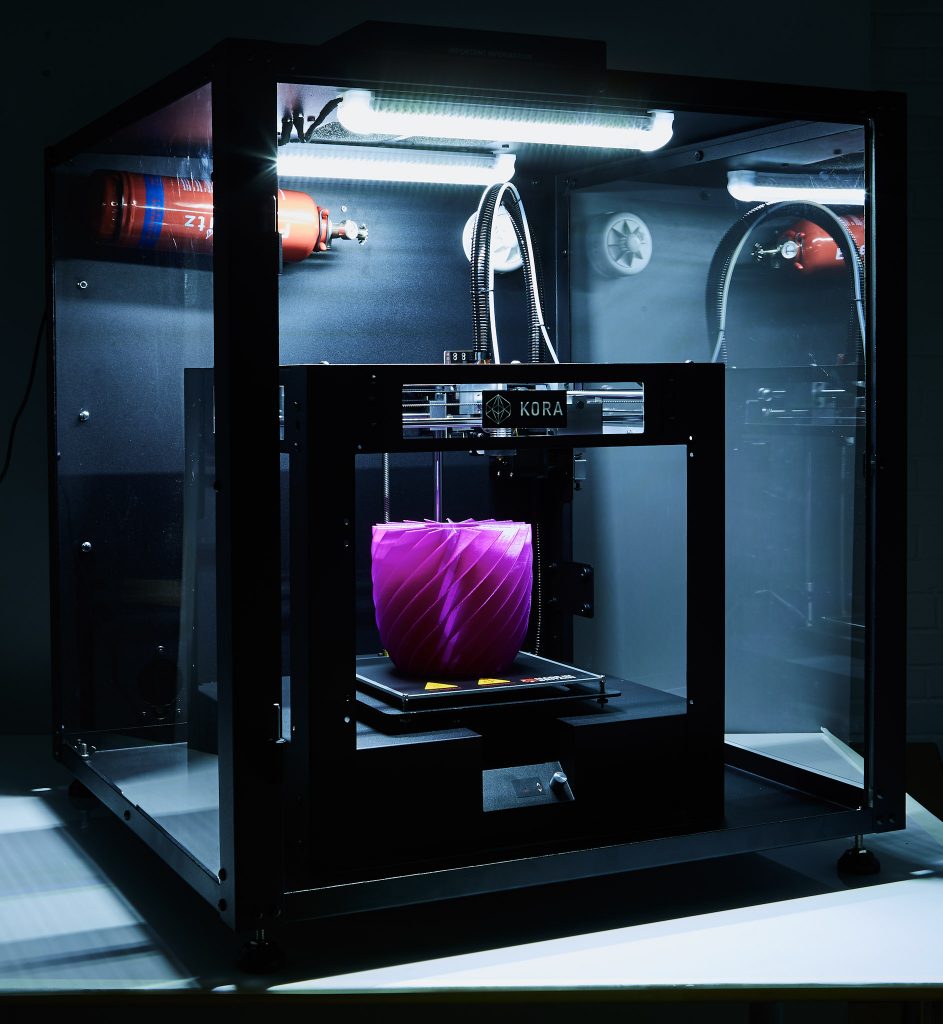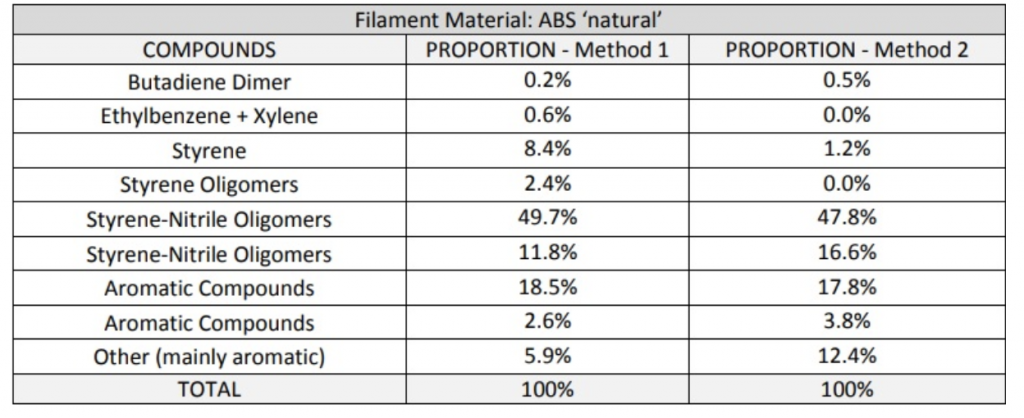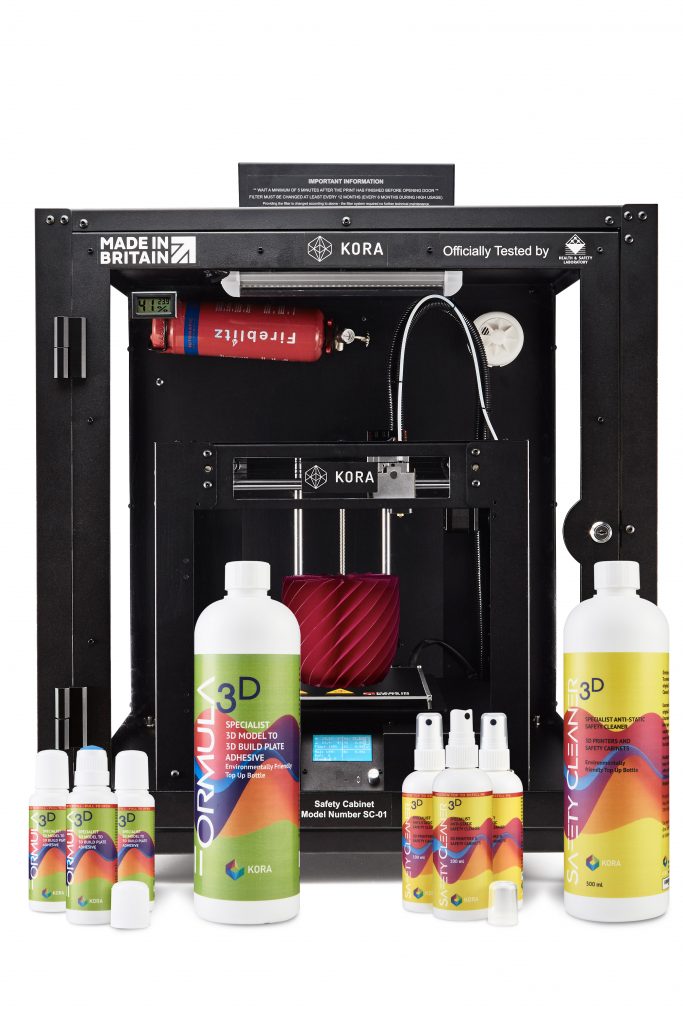FDM 3D printers (FFF, Material Extrusion) continue their march into the classroom, businesses and homes. Meanwhile knowledge about 3D printing safety is only slowly spreading. Resin printers for Stereolithography and DLP processes have materials that can be harmful in liquid form. Procedures and tools to help keep people safe are also lacking here. In many industrial firms, PPE is almost absent and employees are exposed to polymer dust for years. We’ve repeatedly brought up safety through talking about if cabinets should become standard, new safety standards, filtration systems, safety certifications for printers, research on dangerous emissions. If we are to make 3D printing an everyday tool then everyday safety must accompany it. Not properly implementing safety is one of the biggest risks to our industry. Only very few firms are specializing in 3D printing safety. We interviewed Alex McIntosh of UK-based Kora 3D about how their company is tackling 3D printing safety.
What is Kora 3D?
Kora 3D is a UK company who designs and builds its own range of Desktop 3D FFF printers , HSE tested safety cabinets and consumables.
Why do companies do business with you?
They like the fact we design and build our own products here in the UK. Our printers are easy to use but also have the ability to be hackable for advanced builders. We also take health and safety very seriously and help users understand their obligations.

What is holding 3D Printing back?
Probably the most limiting factor in desktop 3D Printing is the slow speed of larger model prints and the ambiguity over the growing awareness of health risks associated with 3D Printing.
Who needs safety cabinets?
Everyone who owns a desktop FFF 3D Printer and does not comply to current legislation after completing a Risk Assessment.
What materials are dangerous, why?
Many can be, All emit particulates of a size capable of inhalation and or ingestion.
ABS, just one example, gives off VOC’s including styrene and isocyanates.

What about TPU and TPE flexible materials?

In what way are materials dangerous?
VOC’s can be harmful to health. Small airborne plastic particles can easily be inhaled and ingested.
How about if I just use PLA?
PLA emits less VOC’s but still emits significant quantities of particulates of a size capable of inhalation and ingestion.
Do I get better print results with a cabinet?
Yes, random air drafts are eliminated which are notorious for degrading 3D Print quality. More stable ambient printing temperature is achieved with an enclosure.
What do I need to do to install it?
The Kora SC-01 Safety Cabinet is delivered in part kit form with comprehensive building instructions supplied. Build it and place the 3D Printer inside the Safety Cabinet, lock the door and switch on the Safety Cabinet filtration system.

What should I do if I’m a high school and want to implement 3D Printing?
Use only PLA filament and install the 3D Printer in a Certified Safety Cabinet. Make sure the printer is CE marked and complete a risk assessment before commencing printing.
What product improvements do you anticipate making?
We will continue to collaborate with Government Agencies to make constant improvements within the 3D Printing industry, maintaining Safety as our primary objective.
What partners do you seek?
The Kora SC-01 Safety Cabinet comes with a Lifetime Warranty, therefore every Customer / Distributor becomes a partner for life. We aim to partner everyone who completes a Risk Assessment and wants to remain compliant with UK Laws.
Subscribe to Our Email Newsletter
Stay up-to-date on all the latest news from the 3D printing industry and receive information and offers from third party vendors.
You May Also Like
Titanium Powder Supplier IperionX Completes HAMR Furnace Installation at Virginia Campus
IperionX, the Charlotte-based manufacturer and supplier of US-sourced titanium products, has installed the Hydrogen Assisted Metallothermic Reduction (HAMR) furnace at its Titanium Manufacturing Campus in South Boston, Virginia. The company...
3D Printing Webinar and Event Roundup: April 28, 2024
In this week’s 3D Printing Webinar and Event Roundup, the Ceramics Expo is taking place in Michigan, Stratasys continues its advanced training courses, and SPE is holding a Polymer Characterization...
Changing the Landscape: 1Print Co-Founder Adam Friedman on His Unique Approach to 3D Printed Construction
Additive construction (AC) is much more versatile than it seems, at first: as natural as it is to focus on the exciting prospect of automated home construction, there’s far more...
HP & INDO-MIM Collaborate to Boost Metal 3D Printing in India
HP Inc. and INDO-MIM, a US- and India-based supplier of metal injection molding (MIM) powders and contract manufacturer, have announced that the two companies will collaborate to accelerate additive manufacturing...






























